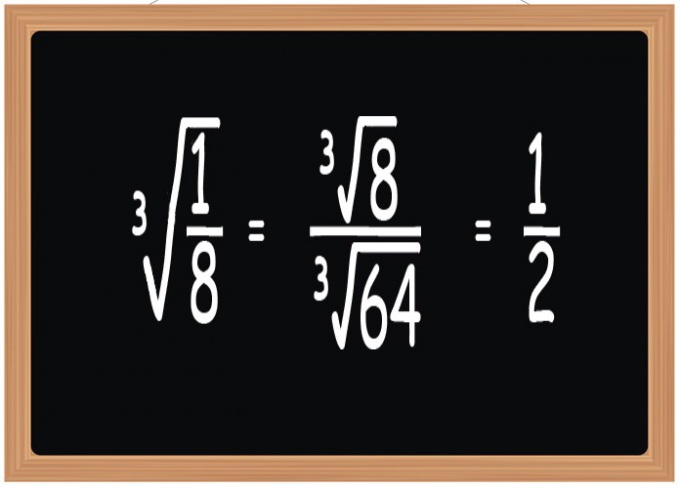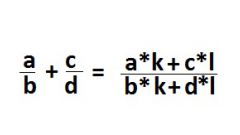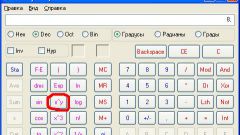Instruction
1
If the radical expression is presented in decimal fractions, and the result need to format fractions common, start with format conversion. For example, to extract the cubic root of the number of 0.125 this operation will look like this: of 0.125 = 125/1000 = 1/8.
2
If the radical expression is a common fraction, we assume that the root of it can be represented as the ratio of the root of the same degree from the numerator to the same root from the denominator. For example, the operation of taking the square root of the fraction 4/9 can be written as: √(4/9) = √4/√9 = 2/3.
3
If the numerator and denominator of a radical expression in its original form does not allow to obtain a convenient for further calculations a value, then try to bring them to mind. Pick such a common multiplier to both or at least one of them could be at the root to an integer value. For example, to calculate the cube root of the fraction 1/8 is easier to pre-increase the numerator and denominator in 8 times: 3√(1/8) = 3√(1*8/8*8) = 3√(8/64) = 3√8/3√64 = 2/4.
4
In the result of this mathematical operation is common fraction should be reduced, if possible. For example, sample calculations from the last step will remain incomplete until you divide the numerator and denominator of the result on the deuce: 3√(1/8) = 3√(1*8/8*8) = 3√(8/64) = 3√8/3√64 = 2/4 = 1/2.
5
If you only need the result of the operation of extracting square root of fractions, and format the resulting numbers and the calculations do not matter, use any calculator. For example, it can be a standard program of Windows operating system. It launches from the main menu on the "start" button, the corresponding link under "All programs" placed in the subsection "Standard".




